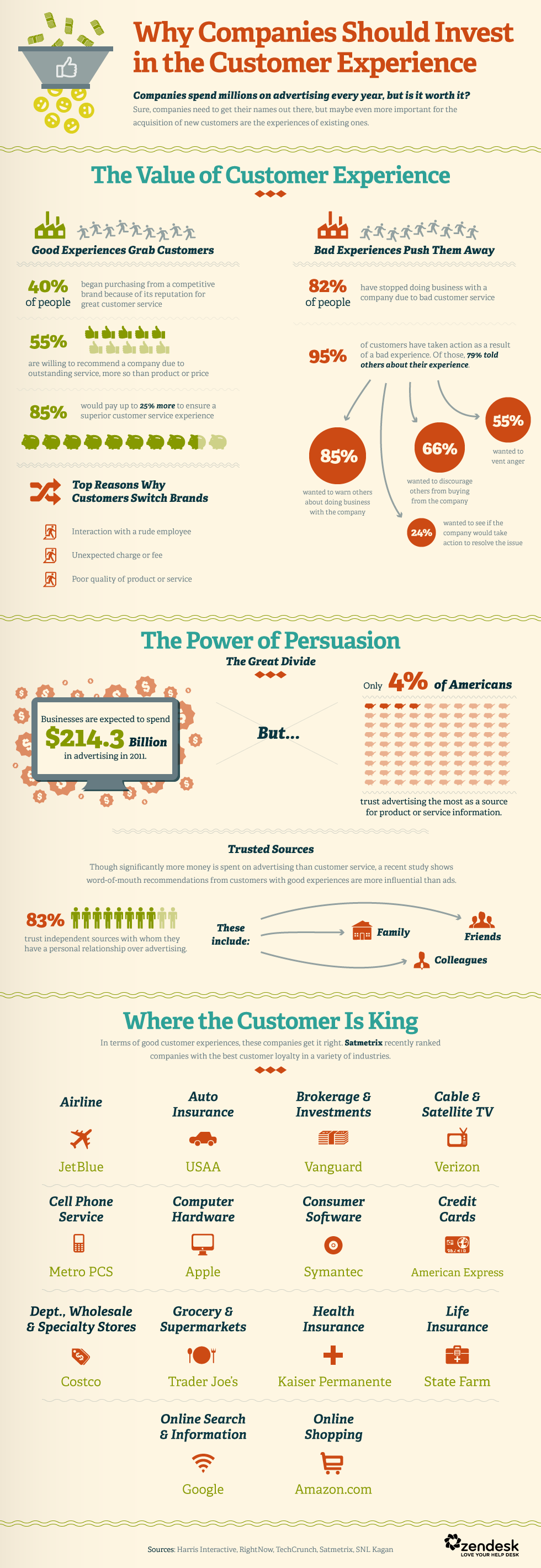Customer Experience Is More Important Than Advertising
Recently businesses surpassed $200 Billion dollars a year in advertising spending. Yet fewer and fewer customers are trusting advertising as the source of information for products and services.
- You hear that people don’t want advertising when making purchasing decisions, they want valuable information.
- You hear that it’s content that spreads via social networks, generating powerful word-of-mouth exposure for savvy businesses.
- You hear that content that builds trust is the best way to achieve what advertising is supposed to achieve.
You hear all of that, and yet, perhaps you’re thinking …
So what?
What does content and customer experience actually mean for my business?
Here’s the answer, word of mouth carries a lot of weight when it comes to the reputation of your business products and services. Facebook, Twitter, Yelp, and other social media and reviews sites help to amplify the voice of the customer because they can produce content that builds trust.
With the power that a single bad customer service experience can have at creating future business opportunities, it’s critical that you focus on investing in the customer experience.
The fine folks at Zengage, the Zendesk blog put together a fantastic infographic outlining the importance of customer experience and the impact that it has on getting new customers and keeping your customers happy.

I suggest you think about investing money into remarkable customer experiences than remarkable ads.




